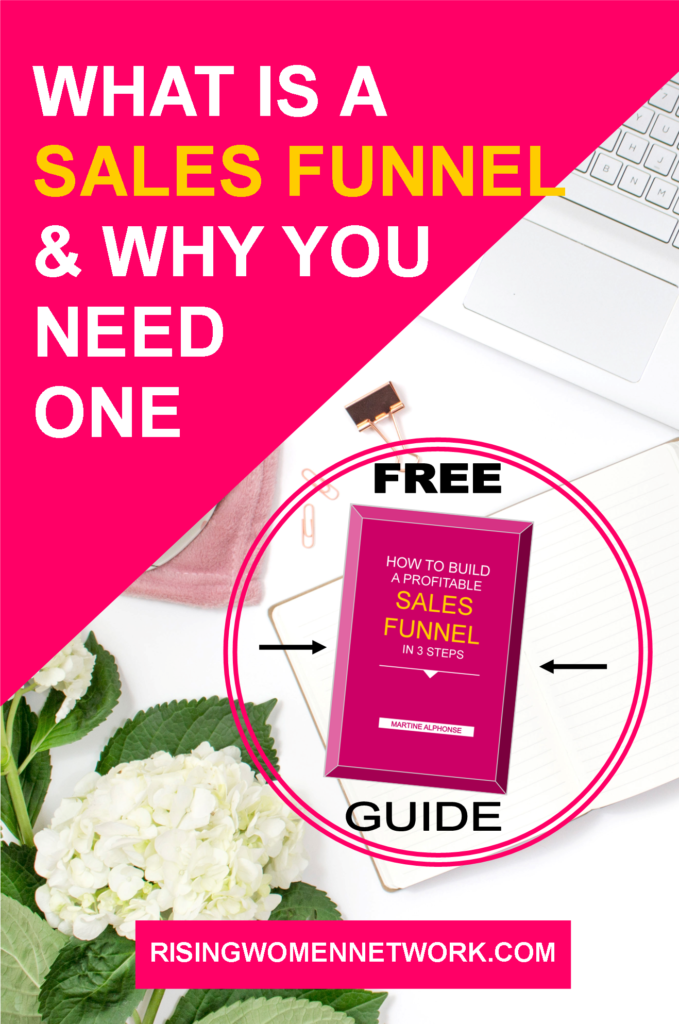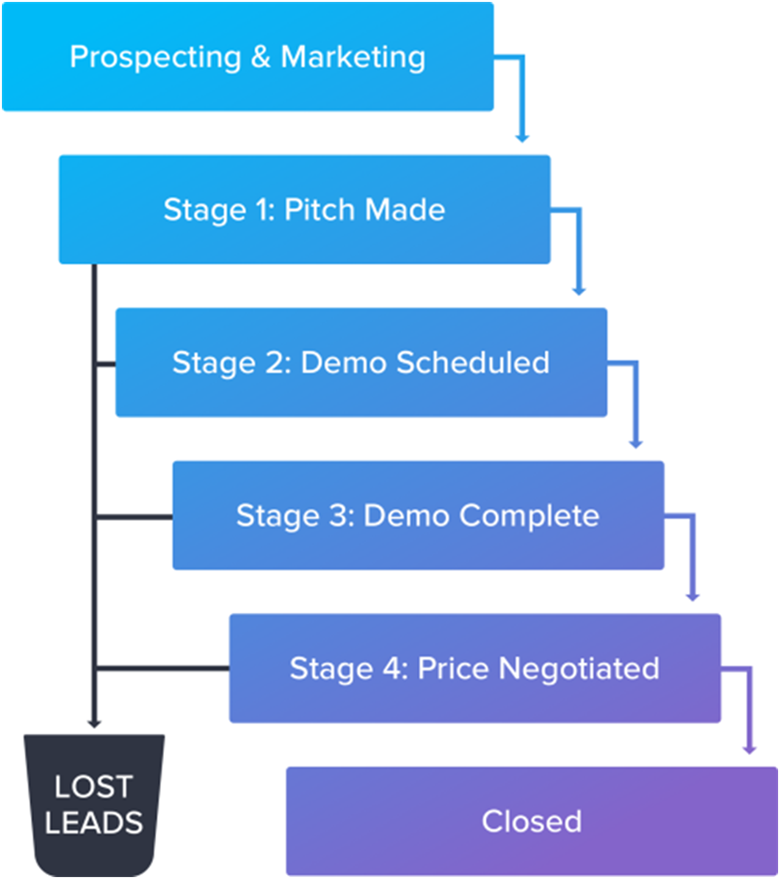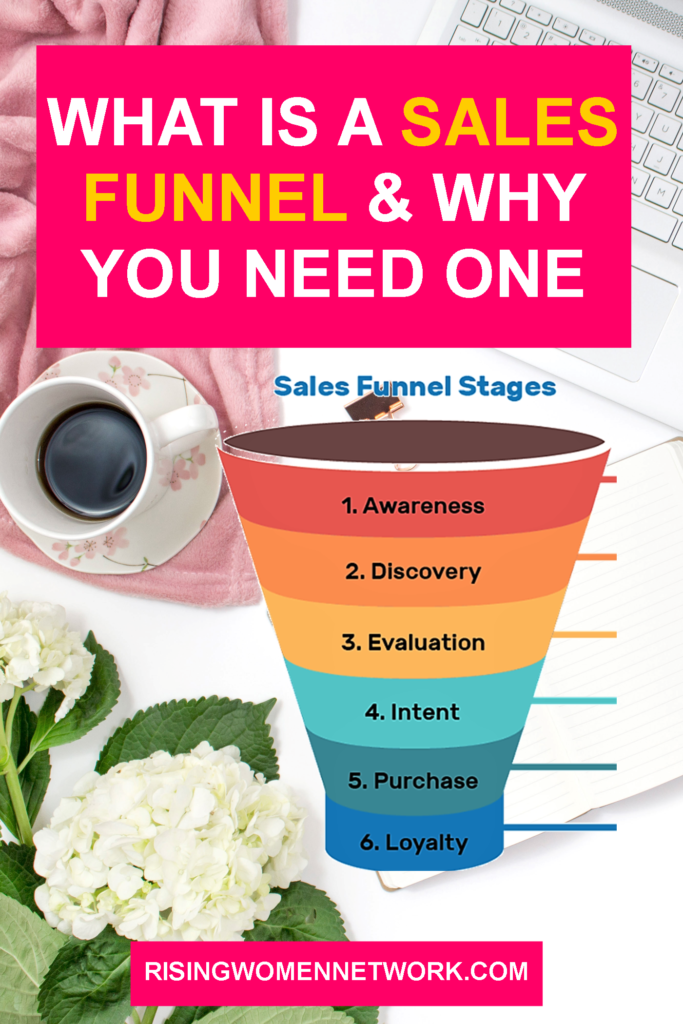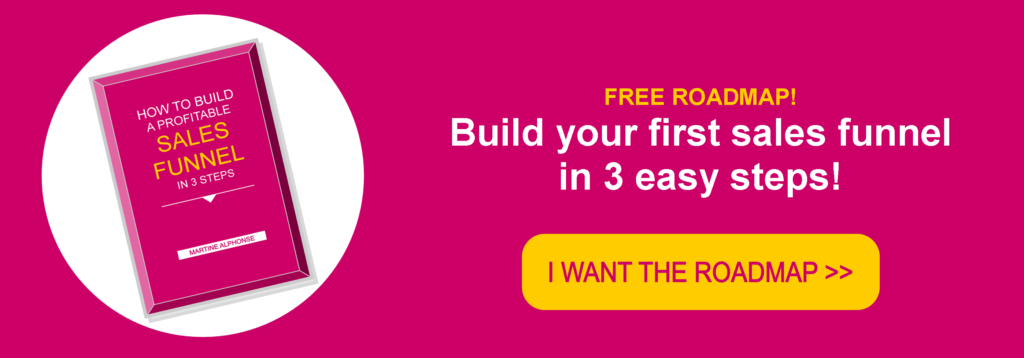So you’ve already come up with your fantastic business idea, have your products ready and are raring to grab sales. One month in and you’ve tried tips and tricks you’ve learned on how to boost your search engine rankings. Read guides on building a digital marketing strategy for your firm and still aren’t able to achieve the kind of figures you want. This is where you need a sales funnel.
In today’s highly competitive online marketing environment, the emphasis for standing out amongst the clutter of competitors is more relevant than ever. In this article, we will be teaching you everything you need to know about sales funnel.
1: What is a sales funnel?
A sales funnel is the marketing term for the journey potential customers go through on the way to purchase. There are several steps to a sales funnel, usually known as the top, middle, and bottom of the funnel, although these steps may vary depending on a company’s sales model.
Any business owner knows the pain of just missing a sale. After weeks of pitches and demos, chatter and charm, the prospect drops out of the sales funnel without buying.
It happens. But it happens less often when you have the right sales funnel management help. Many small business sales funnels are more like sieves, with holes left by patched-together spreadsheets, sticky notes, missed appointments and forgotten follow-ups.
There’s a better way. Sales and marketing automation software can plug those sales funnel holes and turn near-misses into sales.
2: Why is the sales funnel important?
A sales funnel helps you understand what potential customers are thinking and doing at each stage of the purchasing journey. These insights allow you to invest in the right marketing activities and channels, create the most relevant messaging during each stage and turn more prospects into paying customers.

What are the sales funnel stages?
From the moment prospects hear about your product or service until the moment they make a purchase (or don’t), they pass through different stages of your sales funnel. That journey through your funnel may change from one prospect to another, but in the end, they’ll evaluate it based on their interest level. They’ll think about the problem they’re trying to solve and conduct competitive research to make sure your offering is the best solution.
In general, there are four main stages:
Stage 1: Awareness
The first of the sales funnel stages is called the “awareness” level, because it’s where people first become aware of your product or service. They may hear about you from your advertising, social media, even word of mouth.
How and why those people move down the sales funnel depends on your own sales and marketing ability, of course. The leads in the middle and lower sales funnel stages are those that you want to pay the most attention to, because they’ve moved beyond awareness to interest.
An example of the awareness stage would be a prospect learning about your company for the first time. Perhaps they clicked on one of your ads, read your blog, found your website via a Google search, or heard a colleague talking about your product or service.
Stage 2: Interest
Once prospects have learned about your brand, they’ll evaluate it based on their interest level. They’ll think about the problem they’re trying to solve and conduct competitive research to make sure your offering is the best solution.
Stage 3: Decision
Armed with information about your company, prospects will dig deeper into your pricing and packaging options. Sales pages, webinars, and calls are helpful in this stage to help sway prospects to make a purchase.
Stage 4: Action
All your work comes down to this stage: whether the prospect makes a purchase or not. If they didn’t, the deal isn’t lost forever. You can create nurture campaigns to make sure you stay top of mind.
How to create a sales funnel for your business
For your sales funnel to exist, you first need prospects who can move through that funnel. Once you have those prospects, you can track behavior and engagement using lead scoring to identify where they are in the funnel.
Here are five steps to help you create a sales funnel:
-
-
- Build a landing page
-
A landing page will most likely be the first time prospects learn about your company. If they click on an ad, sign up for a webinar, or download an ebook, they’ll go to a landing page. That page should clearly communicate who you are as a company and your unique benefits (after all, this could be the one and only opportunity you have to wow prospects). And, most importantly, make sure the landing page has a form for prospects to enter their information — you want to capture their email address so you can continue to communicate with them.
-
-
- Offer something of value
-
Here’s the part where you have to give something to your prospects in exchange for their email address. A lead magnet, like an eBook or whitepaper, is an effective way to offer something of value on your landing page.
-
-
- Start nurturing
-
At this point, your prospects will move from the Awareness stage into the Interest stage. And, because you have all their email addresses from the landing page, you can create an email nurture series to share educational content about your offering.
-
-
- Upsell
-
As prospects move into the Decision stage, you want to offer anything that can nudge them into the direction of a purchasing decision. This could include a product demo, extended free trial, or special discount.
-
-
- Keep it going
-
In the Action phase, you’ll either land new customers or hear why prospects aren’t interested in purchasing. Either way, keep the communication going. For new customers, focus on product education, engagement, and retention. For prospects who didn’t make a purchase, build a new nurture series to check in with them every few months.
Chapter 03: Find the cracks in your sales funnel stages
Now that you’ve learned about building a sales funnel, we start to see why sales funnel management matters. Even very good prospects can leak out of the sales funnel along the way if they’re not nurtured carefully. The best way to prevent that loss is to have a clear idea of the steps in your sales process—and help in making those steps happen.
In some companies, those steps to the sale might look like this:

Prospecting and marketing are all the things you do to get people into the first of your sales funnel stages. Note that stages are broken into two or more steps wherever possible. A demo could be called a single stage, but in real life it involves a lot of things: contacting the customer, sending reminders, doing the demo, and then following up. Whatever your own sales funnel stages look like, the support you need in managing them will be the same.
Once you know your sales funnel stages, it’s time to find out where you’re losing potential customers. Sit down with your team (or with yourself, if you’re CEO, CMO and head janitor) and ask yourself:
-
-
- Where are the bottlenecks in my sales process?
- Where do I tend to lose track of potential customers?
- What are the positive trigger points—the specific actions that typically result in a sale?
-
Look carefully at the cracks where your chosen steps may not be working. Then get ready to fix your funnel.
Chapter 04: How sales funnel management can help
Leaks in the sales funnel process often spring from three basic causes. The good news is that sales funnel management can help with each.
Throwing away the “no’s” too quickly
In sales, a “no” can often mean “not until later.” For example, a common objection for customer relationship management (CRM) software is this: “I don’t have time to get my content together to make the platform useful.” This prospect is actually saying, “I’m interested, I see the value, but I can’t take advantage of it at this moment.”
It’s tempting to dump this lead and move on to the next.
There’s a better solution: Build out an automated email follow-up campaign that speaks directly to this objection. Any time you encounter this problem, you can send that prospect information that seems designed just for them. A multi-month educational campaign may reduce their content anxiety and nurture them toward a sale. Yes, it’s work up front, but once finished, this campaign will work for you always.
Action item: Look at the most common objections from your prospects, and think about which can be turned around with helpful education and automated follow-up. Where in your sales funnel are you dismissing prospects too quickly?
Follow-up fails
Are you following up as much as you should be? Probably not, says the Business News Daily:
-
-
- 48%of sales reps never follow up with prospects
- Only 10%of sales reps make more than three contacts with a prospect
- Yet 80%of sales close between the fifth and 12th contact
-
That’s a lot of follow-up fails. The challenge is easy to understand: Do I call new leads, or follow up with an old one for the sixth time? Persistence can feel like a waste of time, but the numbers prove otherwise.
But there’s a better solution: Small businesses may find help lies in a marketing automation funnel. Instead of an either/or game, automation software offers a both/and game. All your prospects get consistent and friendly emails and contacts at all stages of the sales funnel, so you can save your personal attention for the day’s hottest leads.
Action item: Analyze your last 20 leads and count how many times, on average, you contacted a prospect. If you see follow-up fails, a marketing automation funnel can help.
Too slow
Did you know that new leads are nine times more likely to convert if you follow up within the first five minutes after they express interest? Wait 30+ minutes, and your lead is 21 times less likely to turn into a sale.
You may be asking, “How the heck am I supposed to contact a lead within the first five minutes? That seems impossible.”
There’s a better solution: It’s not impossible with sales funnel management automation. Set up your system with the response you want, and it will be ready to send it immediately to any interested prospect—even the one who contacts you on Saturday at 3 am. As captured leads pass down the funnel, your sales automation platform can send added personalized emails that are just right for each moment.
Action item: Figure out how quickly you normally respond to a brand-new prospect right now. Then craft your first mass personalized email to send to future prospects.
Chapter 05:Deliver the right message at the right stage of the sales funnel
What does the flow of automated emails look like in the sales funnel?
Let’s say you often encounter two separate objections to your sales pitch: “We don’t have time to implement” and “We’re not sure we need it.” You can craft a series of emails to respond to each, and set them to be delivered over the next few weeks or months.
Depending on the objection, you may want to send different materials at different times: testimonials from other clients, videos showing how easy your system is to set up, or just friendly check-in emails.
Now your marketing automation funnel is giving you a boost at every stage: It responded within five minutes of their first contact, and that helped get you the chance to make your pitch. Now, after the pitch, you’re ready to stay in contact and respond to objections in a friendly, targeted way. (And if they love the pitch, automation can help you stay in close touch until closing.)
It’s best to have a customer relationship management system involved here. A good CRM has the power to pull in every piece of information you have in your database, so it can be used to make every email perfectly personal.
Chapter 06: Master the sales funnel process with ClickFunnel
Sales funnel management is about more than being organized. It’s about giving every potential customer the personal treatment they crave. It’s about making sure you follow up at the right times, every time. So you can spend more of your time doing the most rewarding thing of all: closing sales.
PIN THIS BLOG POST ON YOUR PINTEREST IF YOU FOUND IT HELPFUL.
Ummmm … do you know how much I’d appreciate that?
I’d really appreciate it. Like a lot.
To pin on Pinterest, simply hover over the image below and click on the little “P!”



